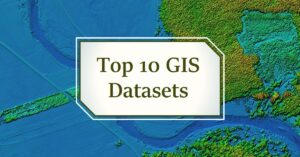Introduction
How do we envision our cities’ future? This question is more important than ever. Urban planners face a difficult task: controlling the growth and development of cities in a way that is both sustainable and useful to all. And here is where Geographic Information Systems (GIS) come into play. Let’s look at a case study to see how GIS can be used in urban planning.
Understanding GIS: An Overview
GIS is essentially a tool for capturing, storing, manipulating, analyzing, managing, and presenting spatial or geographic data. It assists us in visualizing, questioning, analyzing, and interpreting facts in order to comprehend relationships, patterns, and trends.
Importance of GIS in Urban Planning
GIS technology has transformed urban planning. It provides a platform for combining spatial data with demographic information, infrastructure, and natural elements. This promotes more informed decision-making and the development of sustainable urban environments.
Case Study: GIS in Action
Background of the Case Study Area
For our case study, we’ll consider a rapidly growing urban area facing issues like overcrowding, traffic congestion, and inadequate public utilities.
The Role of GIS in the Planning Process
GIS plays an integral role in the planning process, from data collection to implementation.
Data Collection
GIS was used to collect and store municipal data such as population density, road networks, public utilities, land use, and more.
Analysis and Visualization
The acquired data was evaluated using GIS to identify problem areas and opportunities. Visual maps were developed to assist stakeholders in comprehending the existing situation and prospective remedies.
Decision-making and Implementation
GIS helped stakeholders make informed decisions and implement changes efficiently.
Benefits Realized from the Use of GIS
Enhanced Decision Making
GIS allowed a thorough understanding of the area, resulting in better infrastructure construction and resource allocation decisions.
Improved Collaboration
With GIS, data was easily shared among stakeholders, fostering collaboration.
Increased Efficiency
GIS streamlined the planning process, saving time and resources.
Challenges and Limitations of GIS in Urban Planning
Despite its benefits, GIS is not without its drawbacks. Data collection can be time-consuming, and the technology must be operated by competent professionals. Furthermore, the expense of installing GIS can be prohibitively expensive.
The Future of GIS in Urban Planning
The future of GIS in urban planning is promising. With advancements in technology, we can expect even more accurate data collection and analysis capabilities, making urban planning more efficient and sustainable.
Conclusion
Finally, GIS is an effective tool for urban planning. It promotes educated decision-making, encourages teamwork, and boosts efficiency. However, it is not without its difficulties. Continuous advancements in GIS technology will only strengthen its significance in shaping our cities as we move forward.
FAQs
1. What is GIS?
GIS, or Geographic Information System, is a tool that captures, manages, and presents geographic data.
2. How is GIS used in urban planning?
GIS is used in urban planning to collect, analyze, and visualize data about a city. It aids in decision-making and implementation of urban development plans.
3. What are the benefits of using GIS in urban planning?
Benefits of using GIS in urban planning include enhanced decision-making, improved collaboration, and increased efficiency.
4. What are the challenges of using GIS in urban planning?
Challenges include time-consuming data collection, the need for skilled professionals, and high implementation costs.
5. What is the future of GIS in urban planning?
The future of GIS in urban planning is promising, with advancements in technology expected to improve data collection and analysis capabilities.


